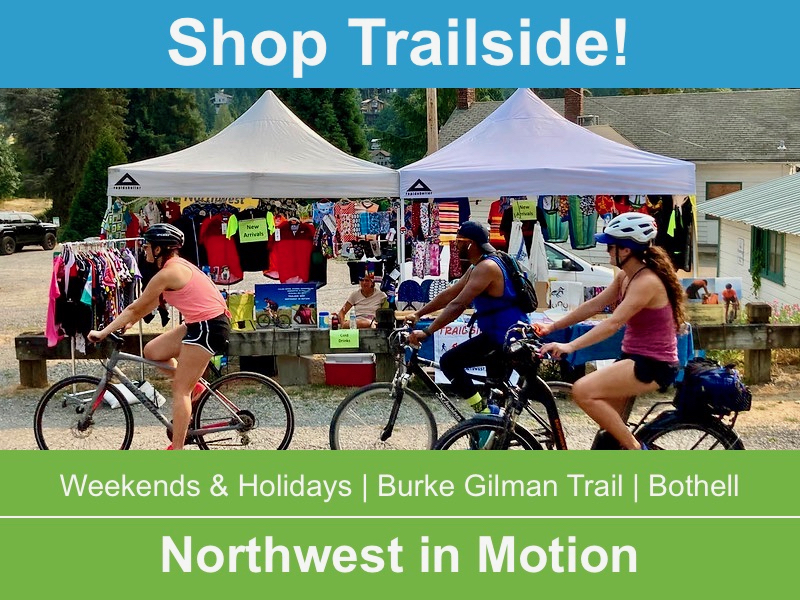Ultra endurance bike racers rely on their crew to get them to the finish line.
From the outside, bike racing looks like an individual sport. After all, an individual crosses the finish line, and the first person to cross the line gets all of the accolades. In fact, bike racing is a team sport. In competitions like the Tour de France, racers work together to position their best sprinters, climbers, and overall racers for winning results. Behind the scenes, crew members support the racers.

Teamwork, especially from the crew, is essential in ultra endurance bike racing, which is usually defined as events over 200 miles. Six or more crew might support a solo competitor, depending on the distance of the event. Ultra bike racing crew are responsible for ensuring the safety of the racer, nutrition, hydration, sleep, and providing motivation.
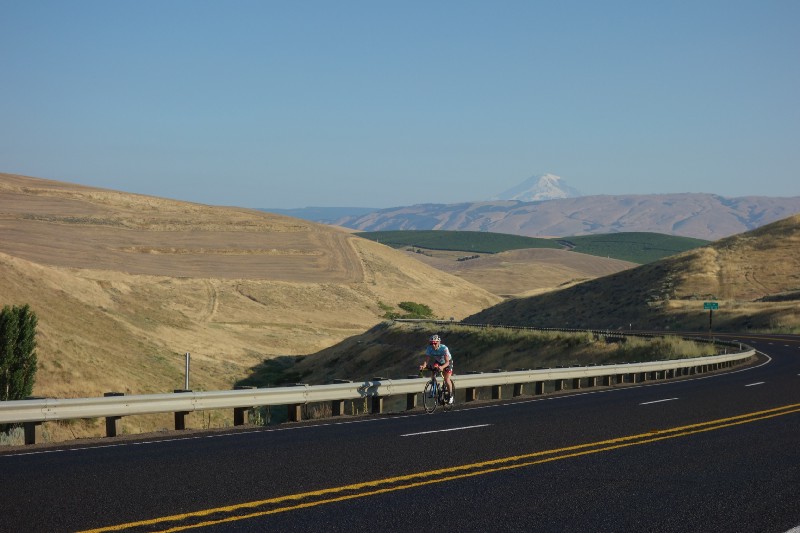
Here in the Pacific Northwest, the premier ultra cycling race is the Race Across Oregon (aka “RAO”). The route varies a little from year to year, and is typically a loop around the north-central portions of the state. The distance is over 500 miles with about 40,000 feet of climbing. Competitors include folks riding it solo, and teams riding in a relay format. Top solo competitors usually finish in under 40 hours, and top relay teams finish in under 30 hours. Competitors strive to keep moving at all times, which means very little sleep, if any.
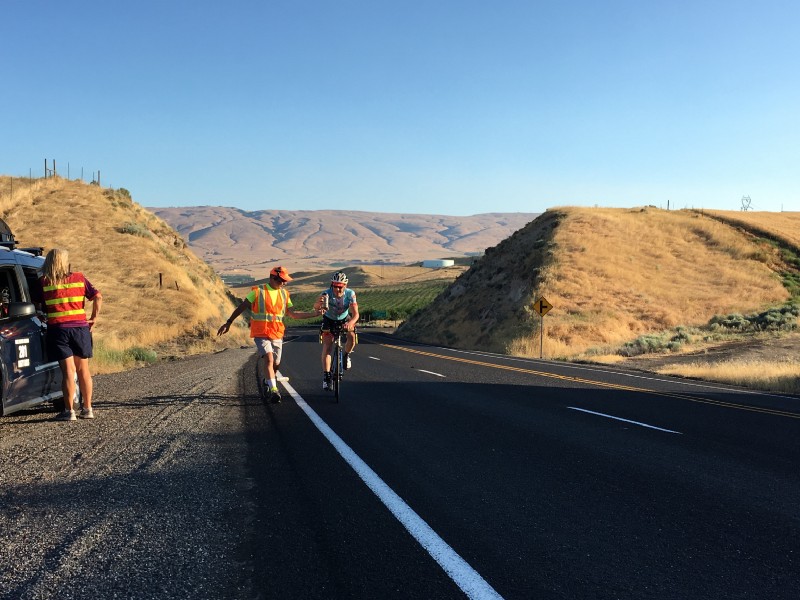
I periodically race and crew in ultra races. At this year’s RAO, held the weekend of July 15, I crewed for Seattle’s Mick Walsh. Mick is an Irishman who has been racing bikes since the 1970s. His long race resume includes the novelty of being the first Irishman to compete at the Ironman World Championships in 1983. These days he focuses on ultra rides and races.

Crewing is more challenging and fun than it might sound. Three of us supported Mick this year. The others, Kevin Van Dyke and John Henry Maurice, were also experienced ultra racers and crew. In fact, they had crewed together for Mick in a successful Race Across the West (RAW), from Oceanside to Durango, which is the first portion of Race Across America (RAAM). Their previous experience with Mick played an important role at this year’s RAO.
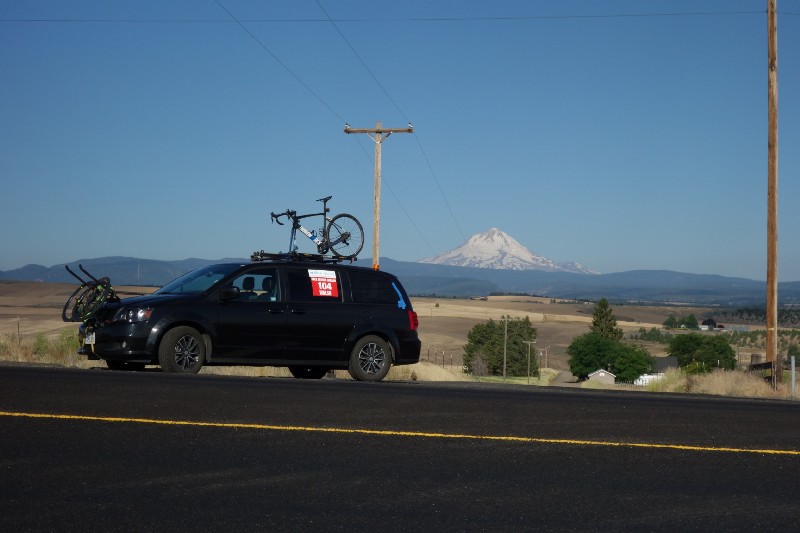
In ultra racing of any kind, the definition of “success” can be ambiguous. Even for seasoned ultra racers, finishing is not guaranteed, so merely finishing qualifies as a success. As the race progresses, the mind and body rebel in the form of vomiting, sleepiness, cramps, and general lethargy. I’d previously seen this happen with Mick when I crewed for him at the 2011 RAO, when he abandoned the race at about mile 225. The crew’s first responsibility is to get the racer to the finish line, and secondarily to meet or beat a target time. When your racer is dry heaving on the side of the road at 2AM, it’s hard to know whether it’s just a temporary slow down, or game over.
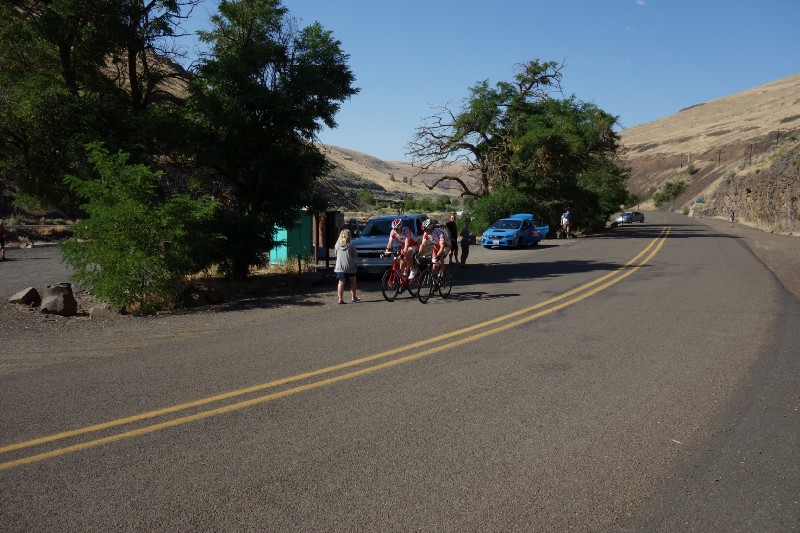
Since the three of us crew were experienced, we fell into roles without much discussion. I nominated Kevin to be crew chief, John Henry mainly dealt with nutrition and hydration, and I mostly drove. Kevin set up a communication system and was able to chat with Mick from the van. We’d ask him how he was feeling, about food, and hydration.
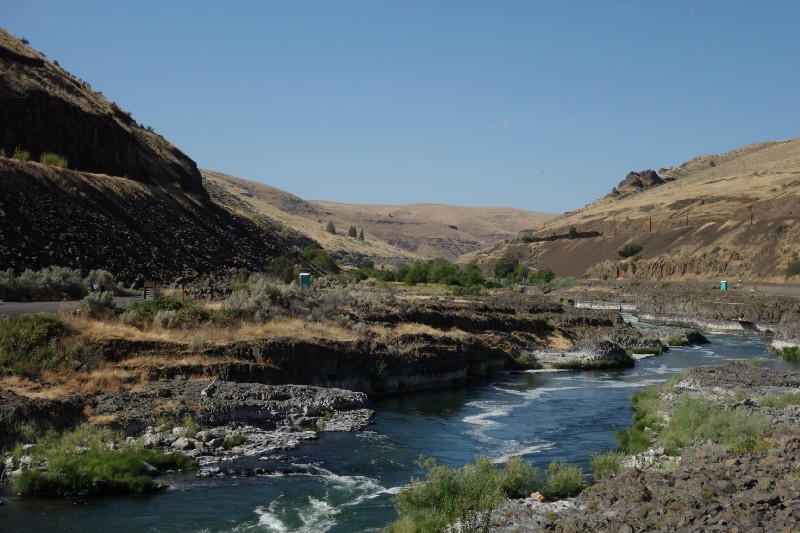
Shearer’s Falls on the Deschutes River. There is no lack of amazing scenery on the RAO course.Solo racers began at 5 am Saturday morning. Perhaps because of the formidable challenge ahead, the sense of camaraderie and community at the start area is palpable. Everyone is credible and respected simply for stepping up to a race like this.
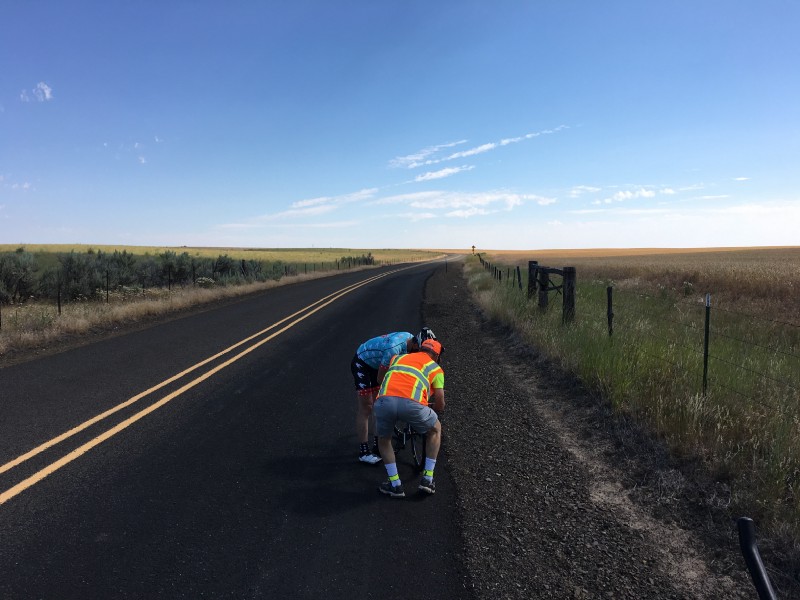
The weather conditions looked favorable for Mick, who is susceptible to heat. At the 2011 RAO, we thought daytime temperatures were to blame for his DNF (Did Not Finish). At RAW, he had a DNF presumably because of the heat, and Kevin and John Henry attributed his successful RAW to putting him in an air conditioned hotel room for a couple hours to bring his core temperature down.

The temperature got up to 90 on Saturday afternoon, which is relatively cool for central Oregon this time of year, but still quite hot for Mick. To help him regulate his temperature during the race Mick used an evaporative cooling vest, and we sprayed him with water every couple of miles during the hottest part of the afternoon.
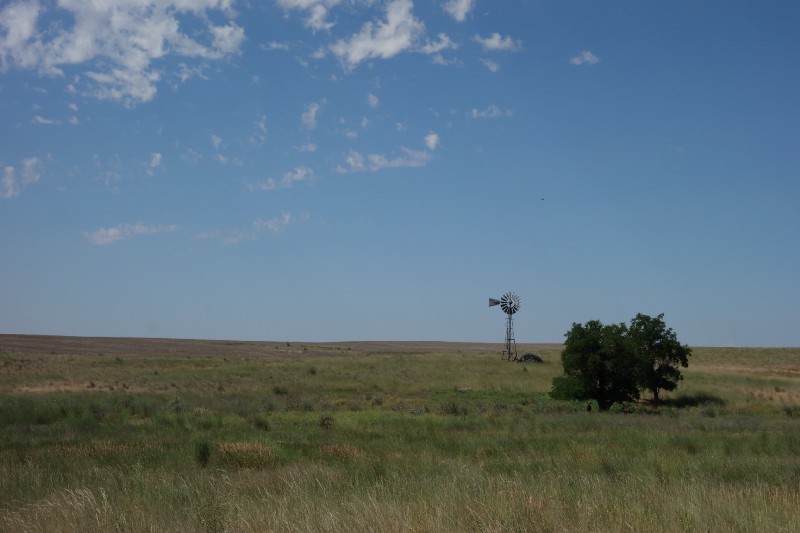
Mick took a planned snack break late Saturday afternoon. His thinking was that if he could replicate his success at randonneuring brevets, he’d have no problem making it to the RAO finish line. We sat him in a chair and he relaxed while we cleaned him up, and fed and hydrated him. After no more than 20 minutes he was off and racing again, and rolling neck and neck with several relay teams at an average speed of over 16 mph.

Things began to go sideways after midnight. From the driver’s seat it looked as though Mick was starting to swerve around, but we couldn’t tell whether it was due to sleepiness or reaching for a water bottle. Eventually he pulled over and into a gravel pullout. He was so sleepy he could barely stand up. We put him in the van and decided to let him sleep for a while. After about 10 minutes he got out of the van and proceeded to forcefully eject the contents of his belly until he was empty. We decided to let him sleep for a solid hour. Kevin monitored the clock while John Henry and I watched the Milky Way and a rising last quarter moon; a side benefit of pulling an all nighter in central Oregon is very little light pollution. While Mick slept, the relay teams put distance on us.
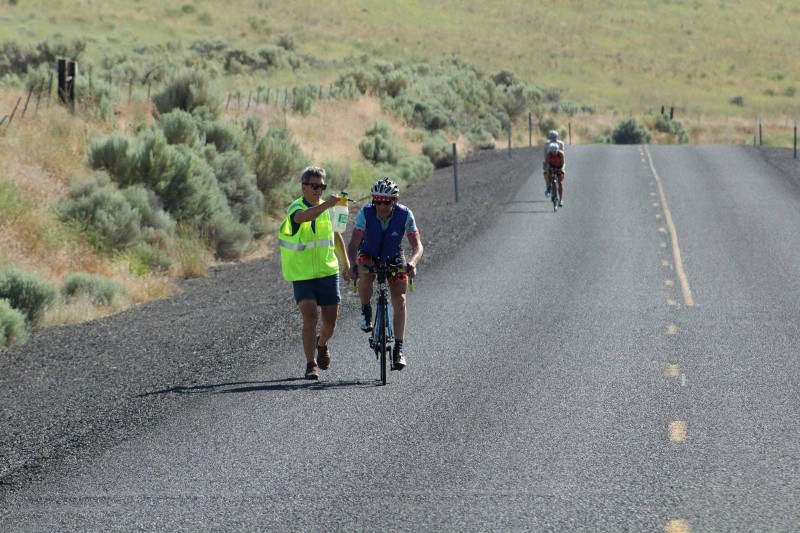
After an hour he got back on the bike and looked good for a while, but it became apparent that his condition hadn’t improved much. John Henry offered a motivational carrot: Keep riding to Mt. Vernon, and we’d let him sleep in a bed at a motel.
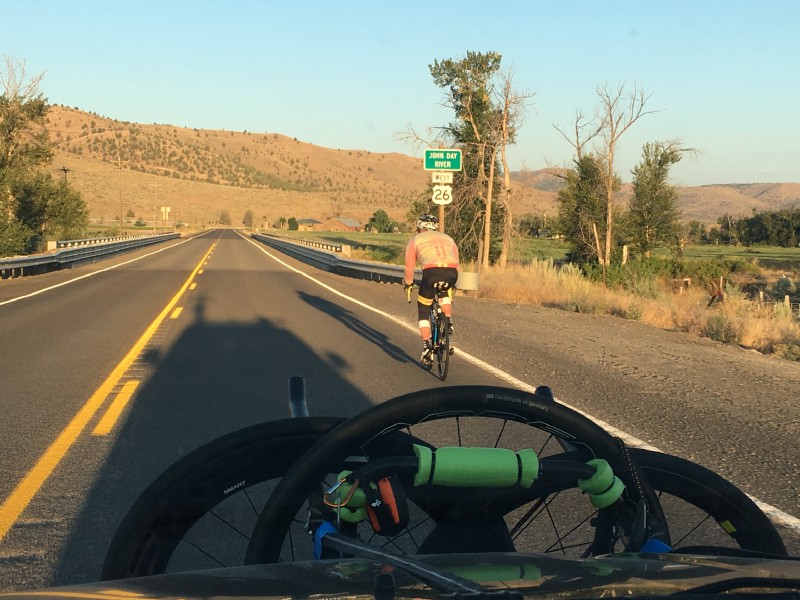
The gracious managers of the Blue Mountain Lodge Motel got out of bed at 2:30AM and set up Mick with a room. He was in bed and asleep before they even swiped his credit card. Us crew got a solid hour of sleep in the van.
Mick awoke and changed into fresh clothing as the light of early dawn began to show on the horizon. Just as we were about to leave, another solo competitor rolled up and asked if we had a spare rear wheel that would fit his bike. The freewheel on his bike was seizing, making it hard to pedal. Unfortunately we couldn’t help, but later that day a race official was able to track down a wheel for him from a team that was 100 miles up the course. It was fantastic example of the kind of sportsmanship that happens in ultra racing.
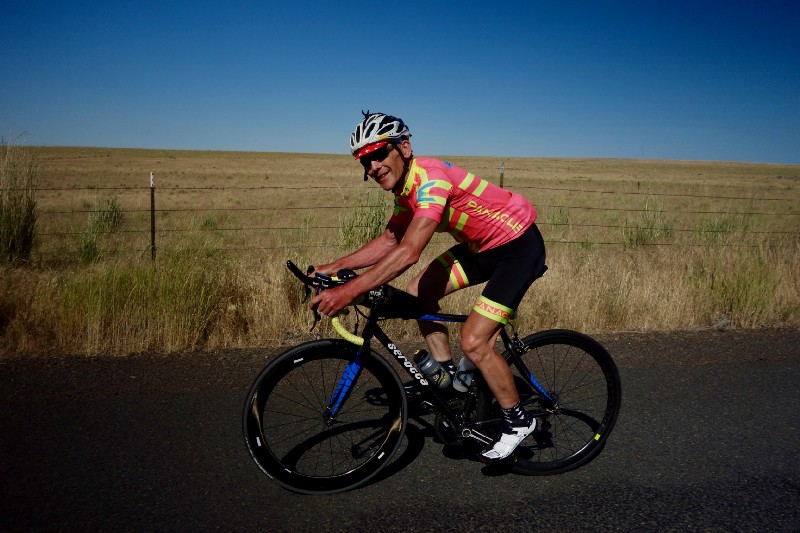
For most of the morning Mick was moving, although he didn’t look like his normal energetic self until about 10 am. Regardless, he was now making steady forward progress toward the finish line in The Dalles.
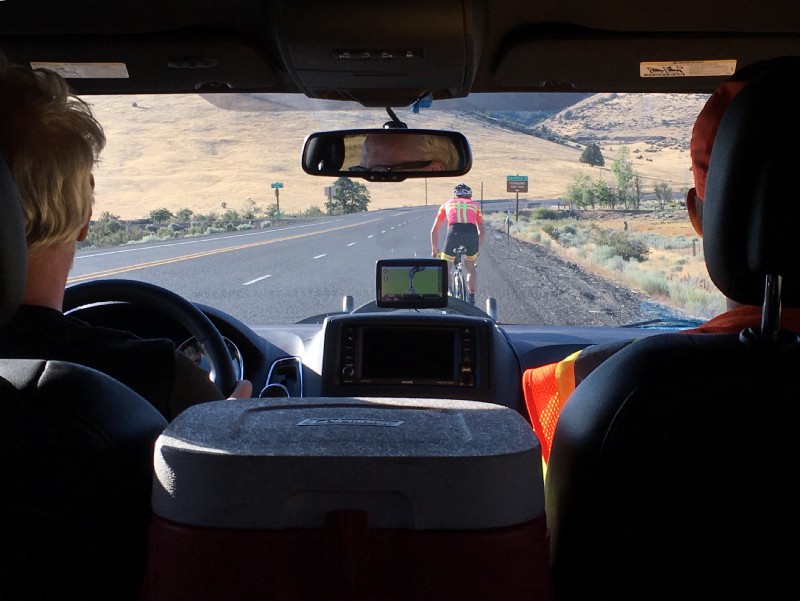
In any kind of race, it’s never over till it’s over. Stories of ultra racers abandoning within striking distance of the finish are not uncommon. As Sunday progressed the crew grew increasingly confident that Mick would finish, and do it within his target time of sub-40 hours.
On the final long climb of the race, we watched Mick decisively move up the grade, and it was apparent he had his mind set on a strong finish.
After nearly 40 hours of dogged persistence battling physical and mental suffering, the finish of RAO (and most ultra events for that matter) is absolutely anticlimactic. As a safety measure in case of a “sprint finish,” the finish line is on a country road outside of The Dalles, seven miles from the event hotel. Although unlikely, this would keep any competitors that were close to one another from racing through the streets of The Dalles.
It was just the four of us at the official finish line. Kevin texted our time to the race officials, and we stopped for hugs and congratulations. Mick had gotten the monkey off his back from the previous DNF, and beat his target time by about 15 minutes.
We got to the event hotel just as the sun was setting, where the race organizer George Thomas did a Facebook Live interview with us. Before calling it a night we chatted with competitors from some of the teams that had finished before us. The finish “party” was the next morning, on Monday, when everyone ate breakfast together and George gave out prizes, some of which given in humor in recognition of notable things that happened during the race.
Having raced and crewed at a number of ultra bike races, I consider both racing (in a relay format) and crewing to be similarly fun and emotionally meaningful. Ultra racing isn’t for everyone, but you can get meaningful experiences from shorter events by riding or running with friends, volunteering at local races, doing shuttle rides, or providing support for friends or teammates on an adventure.
